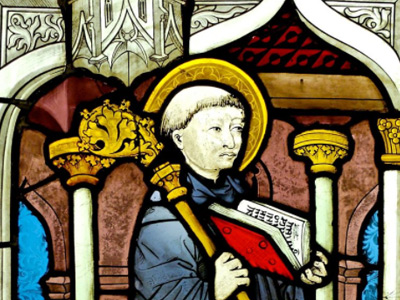Second Crusade (1147–1149)
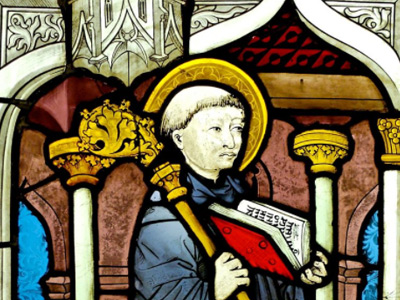
Aftermath
Each of the Christian forces felt betrayed by the other. A new plan was made to attack Ascalon and Conrad took his troops there, but no further help arrived, due to the lack of trust that had resulted from the failed siege. This mutual distrust would linger for a generation due to the defeat, to the ruin of the Christian kingdoms in the Holy Land. After quitting Ascalon, Conrad returned to Constantinople to further his alliance with Manuel. Louis remained behind in Jerusalem until 1149. The discord also extended to the marriage of Louis and Eleanor, which had been falling apart during the course of the Crusade. In April 1149, Louis and Eleanor, who were barely on speaking terms by this time, pointedly boarded separate ships to take them back to France The Kingdom of France is the historiographical name or umbrella term given to various political entities of France in the medieval and early modern period. It was one of the most powerful states in Europe since the High Middle Ages. It was also an early colonial power, with possessions around the world. Colonial conflicts with Great Britain led to the loss of much of its North American holdings by 1763. The Kingdom of France adopted a written constitution in 1791, but the Kingdom was abolished a year later and replaced with the First French Republic..
The Kingdom of France is the historiographical name or umbrella term given to various political entities of France in the medieval and early modern period. It was one of the most powerful states in Europe since the High Middle Ages. It was also an early colonial power, with possessions around the world. Colonial conflicts with Great Britain led to the loss of much of its North American holdings by 1763. The Kingdom of France adopted a written constitution in 1791, but the Kingdom was abolished a year later and replaced with the First French Republic..
Back in Europe, Bernard of Clairvaux was humiliated by the defeat. Bernard considered it his duty to send an apology to the Pope and it is inserted in the second part of his Book of Consideration. There he explains how the sins of the crusaders were the cause of their misfortune and failures. When his attempt to call a new crusade failed, he tried to disassociate himself from the fiasco of the Second Crusade altogether. He would die in 1153.
In Germany, the Crusade was seen as a huge debacle with many monks writing that it could only have been the work of the Devil. The anonymous monk who wrote the Annales Herbipolenses chronicle in Würzburg mentioned that for decades afterwards, noble families in Germany were ransoming back knights who had been taken prisoner in Anatolia using Armenian middle-men. The camp followers who had been taken prisoner and sold into slavery by the Turks were not so lucky. Of the 113 individuals known by name to have been involved in the Crusade, 22 died, 42 returned home while the fate of the last 49 is a mystery. Despite the distaste for the memory of the Second Crusade, the experience of the crusade had notable impact on German literature, with many epic poems of the late 12th century featuring battle scenes clearly inspired by the fighting in the crusade.
The cultural impact of the Second Crusade was even greater in France, with many troubadours fascinated by the alleged affair between Eleanor and Raymond, which helped to feed the theme of courtly love. Unlike Conrad, the image of Louis was improved by the Crusade with many of the French seeing him as a suffering pilgrim king who quietly bore God's punishments.
Relations between the Eastern Roman Empire and the French were badly damaged by the Crusade. Louis and other French leaders openly accused the Emperor Manuel I of colluding with Turkish attacks on them during the march across Asia Minor. The memory of the Second Crusade was to color French views of the Byzantines for the rest of the 12th and 13th centuries. Within the empire itself, the crusade was remembered as a triumph of diplomacy. In the eulogy for the Emperor Manuel by Archbishop Eustathious of Thessalonika, it was declared:
He was able to deal with his enemies with enviable skill, playing off one against the other with the aim of bringing peace and tranquility
The preliminary Wendish Crusade achieved mixed results. While the Saxons affirmed their possession of Wagria and Polabia, pagans retained control of the Obodrite land east of Lübeck. The Saxons also received tribute from Chief Niklot, enabled the colonization of the Bishopric of Havelberg, and freed some Danish prisoners. However, the disparate Christian leaders regarded their counterparts with suspicion and accused each other of sabotaging the campaign.
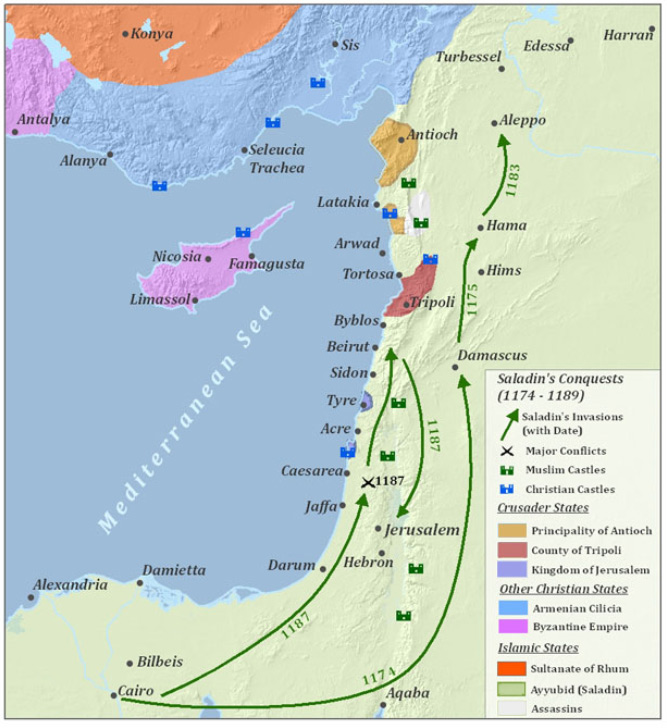
Map of Saladin's Conquest into the Levant
In Iberia, the campaigns in Spain, along with the siege of Lisbon, were some of the few lasting Christian victories of the Second Crusade. They are seen as pivotal battles of the wider Reconquista, which would be completed in 1492.
In the East the situation was much darker for the Christians. In the Holy Land, the Second Crusade had disastrous long-term consequences for Jerusalem. In 1149, the atabeg Anur died, at which point the amir Abu Sa'id Mujir al-Din Abaq Ibn Muhammad finally began to rule. The ra'is of Damascus and commander of the ahdath milita Mu'ayad al-Dawhal Ibn al-Sufi feel that since his ahdath had played a major role in defeating the Second Crusade that he deserved a greater share of the power, and within two months of Anur's death was leading a rebellion against Abaq. The in-fighting within Damascus was to lead to the end of the Burid state within five years. Damascus no longer trusted the crusader kingdom and was taken by Nur ad-Din after a short siege in 1154.
Baldwin III finally seized Ascalon in 1153, which brought Egypt into the sphere of conflict. Jerusalem was able to make further advances into Egypt, briefly occupying Cairo in the 1160s. However, relations with the Byzantine Empire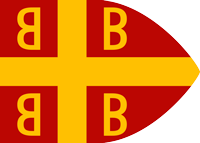 The Byzantine Empire, also referred to as the Eastern Roman Empire or Byzantium, was the continuation of the Roman Empire primarily in its eastern provinces during Late Antiquity and the Middle Ages, when its capital city was Constantinople. It survived the fragmentation and fall of the Western Roman Empire in the 5th century AD and continued to exist for an additional thousand years until the fall of Constantinople to the Ottoman Empire in 1453. were mixed, and reinforcements from Europe were sparse after the disaster of the Second Crusade. King Amalric I of Jerusalem allied with the Byzantines and participated in a combined invasion of Egypt in 1169, but the expedition ultimately failed. In 1171, Saladin, nephew of one of Nur ad-Din's generals, was proclaimed Sultan of Egypt, uniting Egypt and Syria and completely surrounding the crusader kingdom. Meanwhile, the Byzantine alliance ended with the death of emperor Manuel I in 1180, and in 1187, Jerusalem capitulated to Saladin. His forces then spread north to capture all but the capital cities of the Crusader States, precipitating the Third Crusade.
The Byzantine Empire, also referred to as the Eastern Roman Empire or Byzantium, was the continuation of the Roman Empire primarily in its eastern provinces during Late Antiquity and the Middle Ages, when its capital city was Constantinople. It survived the fragmentation and fall of the Western Roman Empire in the 5th century AD and continued to exist for an additional thousand years until the fall of Constantinople to the Ottoman Empire in 1453. were mixed, and reinforcements from Europe were sparse after the disaster of the Second Crusade. King Amalric I of Jerusalem allied with the Byzantines and participated in a combined invasion of Egypt in 1169, but the expedition ultimately failed. In 1171, Saladin, nephew of one of Nur ad-Din's generals, was proclaimed Sultan of Egypt, uniting Egypt and Syria and completely surrounding the crusader kingdom. Meanwhile, the Byzantine alliance ended with the death of emperor Manuel I in 1180, and in 1187, Jerusalem capitulated to Saladin. His forces then spread north to capture all but the capital cities of the Crusader States, precipitating the Third Crusade.
HISTORY
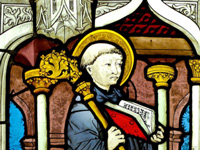
RESOURCES
This article uses material from the Wikipedia article "Second Crusade (1147–1149)", which is released under the Creative Commons Attribution-Share-Alike License 3.0.
© Stories Preschool. All Rights Reserved.
